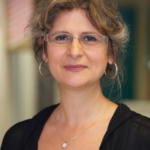Link to Pubmed [PMID] – 27247079
Cell. Microbiol. 2016 May;
Interactive link to publication: Cell Microbiol. 18: 1070-1077 (2016).
Abstract:
Mycobacterium tuberculosis, the infectious agent of human tuberculosis is a master player in circumventing the defense mechanisms of the host immune system. The host-pathogen interaction in the case of an infection with M. tuberculosis is highly complex, involving dedicated mycobacterial virulence factors as well as the action of the innate and adapted immune systems, which determine the outcome of infection. Macrophages play a key role in this process through internalizing the bacterium in a phagosomal vacuole. While this action has normally the function of eliminating invading bacteria, M. tuberculosis employs efficient strategies to prevent its extermination. The question on how-and-where the bacterium succeeds in doing so has interested generations of scientists and still remains a fascinating and important research subject focused on mycobacterial lipids, secretion systems and other contributing factors. This topic is also central to the longstanding and partially controversial discussion on mycobacterial phagosomal rupture and vacuole-to-cytosol translocation, to be reviewed here in more detail.





